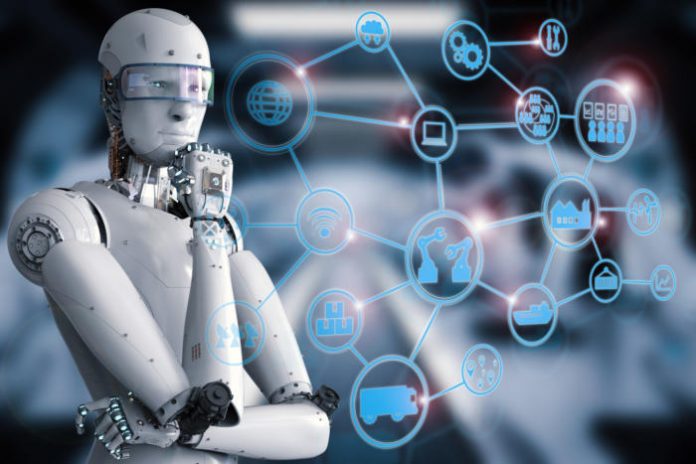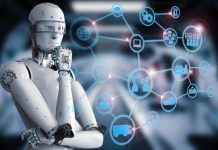This article has been written by Girija Menon pursuing a Training program on Using AI for Business Growth from Skill Arbitrage.
This article has been edited and published by Shashwat Kaushik.
Table of Contents
Introduction
Predicting weather and disasters has always been part of the human race. Mountaineers, guides, and sailors observed natural occurrences and predicted the weather rather accurately.
The vast sky has been the screen from which these predictions popped up. Changes in the colour of clouds, their density, etc., were signs of storms, rains, and tornadoes. The moon, too, has its signals that, if studied properly, give a fair indication of the weather to follow. Our ancestors used these natural elements to forecast the weather, which helped them in their travels, vocations, and even in the process of farming and other agricultural activities.
Animals, too, are sensitive and have a sense of impending disasters, which, if observed from their behaviour, could be signs of tornadoes, earthquakes, or a harsh winter.
However, as technology has become a big force in steering our lives on Earth, machines have become an integral part of our lives. Just as it has touched every action of our lives, machines have been equipped with tools, software, and intelligence for predicting natural disasters. The advantages are plenty as compared to the skills of a human. The speed at which they analyse data, identify patterns, and devise solutions is way above what the human mind, hands, and brain can do. Ironic indeed, created by these very (human) minds, but they surpass them in every way.
Tools that assist for better accuracy
Data collection and preprocessing
Machines are, after all, not humans, and they need accurate data to give effective outputs. Data collected from images transmitted by satellite, sensors built for weather, and data based on seismic history are analysed for the machines to give accurate output
Feature selection and engineering
Machines analyse what they are fed with. The variables provided have to match the type of disaster. Also, raw data has to be aligned so that it is synchronised with the understanding of the machine
Model selection
The selection of the model and technology has to be accurate, as every disaster is different and so is the specific machine/technology/software.
Real-time monitoring
Timing is most important to predict disasters in advance. Hence, real-time data is crucial. If not tracked in real time, all other processes involved in this go haywire, besides the damage natural disasters bring with them.
Improving accuracy
Having a mix of techniques with regards to technology, software and models also helps with error reduction. Because if one fails, the other makes up
Uncertainty estimation
Naturally, the disasters caused by nature are complicated because of the environment. Machines are better equipped to analyse these uncertainties, helping humans take action on time.
Integration with Geographic Information Systems (GIS)
Integration with supported platforms help widen the spectrum of detection and timely prevention.
Challenges
As we all know, machines are not humans, and they come with their own shortfalls. If you input poor quality data, the output will be wrong too. It’s great to assist humans but not replace them.
Today, AI is growing and improving efficiency. The best way forward is to use machines and AI as complementary tools.
Machine Learning will work only with the right tools, research, and modernization. Modern, up-to-date analytics are imperative for the process to work. Climate change has made us vulnerable and, at times, underprepared. Also, since the world is growing at a rapid pace, infrastructure and people’s lives depend on timely detection to reduce losses.
The natural disasters dataset consists of predominantly four classes:
- Cyclone/hurricane
- Earthquake
- Flood
- Wildfire
Natural disasters are inevitable and cannot be prevented but they can certainly be detected, especially today with modern technology. When detected and predicted, preparedness also goes a level higher and human lives and infrastructure can be reduced.
Sensors all around the world are the main tool that monitors natural disasters. Seismic sensors (seismometers) and vibration sensors (seismoscopes) are used to monitor earthquakes and downstream tsunamis.
- Radar maps with “hook echo” for a tornado
- Flood sensors with capability to measure moisture levels and water levels
- Wildfire sensors are still being improved; hence, we have to wait for a better process to be in place.
All of these sensors are equipped to detect natural disasters and give people enough time to be alerted and get to a safe zone well in time.
Using computer vision is another great way to increase accuracy and reduce losses.
Humans and machines can do only that much, and the uncertainties and complex variables make predicting natural disasters very challenging.
The advancement of AI has given us the strength of accuracy and evacuation. Hurricane paths, wildfire detection and earthquake movements can be averted with help from AI. Again, data, analytics, etc., with the knowledge of experts in the field, need to be integrated into the system for optimum advantage.
Using AI to predict natural disasters
AI is the technology of the future and is incorporated into every aspect of our lives today. Using AI to benefit the population with advanced warning of impending natural disasters can save lives by enabling evacuation, improving preparedness, and mobilising emergency responders. AI technology today offers many opportunities to improve forecasting accuracy for most natural disasters.
AI and natural disaster prediction are areas being developed and tested for a wide range of natural hazards.
- Hurricanes: Tracking hurricanes with a mix of top of the line tools certainly improves forecasts and updates. ClimaCell’s Hurricane Guidance brings us expert updates.
- Wildfires: Monitoring satellite images with computer vision algorithms helps identify wildfires before humans can.
- Floods: The AI tool helps with gauging data alongside HYCOM models for predicting floods and reducing damages.
- Volcanic eruptions: Sensors provide rich datasets and indications on pre-eruptions, ground deformation, and gas emissions. Early alerts help with preparedness. This is an area where ongoing research is in progress.
- Earthquakes: Earthquake predictions are difficult due to random natural fault dynamics. AI shows and helps generate real-time alerts using seismic and SPS for predicting earthquakes.
- Fires: Fires are an area where firefighters find it difficult to reach at times. Mountainous terrain and remote areas. Technology helps with identifying flames faster and more accurately.
AI again comes to the rescue by way of sensors that are strategically placed in target areas and transmit temperature data. Analysed data is updated on maps and alerts with co-ordinated are sent to the locations where responders are located.
Algorithms are designed to examine sensor signals to distinguish between smoke from domestic, need based sources such as residential chimneys or fires and smoke from hazardous fires. Using multiple sensors just helps with alerts on spreading fires.
Natural disasters have been striking us forever and will be around, taking us into the future. A constant threat that is highly unpredictable. It affects millions of people worldwide annually, creating havoc in regions, populations, and societies.
In the recent past, we have faced plenty of disasters and the need to use machine learning has increased, understandably so. Machines assist in all fields, with medicine, finance, and natural disasters being some of the most important where they need the assistance of machines and AI. Natural disaster prediction using machine learning benefits society and the human race as a whole by improving the effectiveness of emergency communication and increasing the accuracy of predictions.
Limitations of using ML for natural disaster prediction
- Data availability and quality: Since historical and real-time are imperative yet difficult to procure, the challenge continues to be at times off the mark and biassed.
- Complexity of natural systems: Natural disasters and their occurrences are complex. The environment, weather and human carelessness play a big part. A complex relationship is hard to capture.
- Feature selection and engineering: Choosing the right tool, equipment, software and machines is difficult. Also, the data to be integrated with the machine is never on the dot.
- Generalisation: Our beautiful earth is unique and so is its every corner. A
- generic machine may not work in all places and conditions due to the specifics of the environment.
- Prediction lead time: Early predictions, especially for earthquakes and tornadoes, is a big challenge
- Resource constraints: Resources , expertise and financial constraints are major challenges, especially in developing countries that are heavily populated.
- Ethical and social implications: Ethical and social nuances while predicting disasters through machines may not be taken in the right spirit in some societies.
Conclusion
Machine learning in this area was certainly a blessing and now with AI, it just got stronger. However, there will be challenges and limitations in integrating social factors and translating technology into an operational reality. AI is a double blessing only if it is developed responsibly through a synergy between academic, industry and government collaboration.
 Serato DJ Crack 2025Serato DJ PRO Crack
Serato DJ Crack 2025Serato DJ PRO Crack









 Allow notifications
Allow notifications


